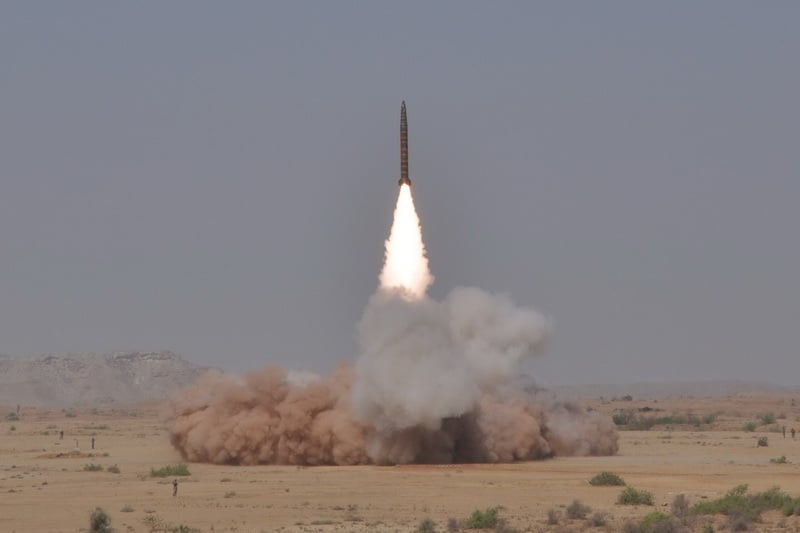Only MIRV equipped BM can evade Indian BMD system..... or overwhelming number of launches at the same time.
Thanks for shitting my post once again...
Hatf-1/1A(unguided) have been completely replaced by Hatf-1B(guided).
Hatf II outdated aswell as way too less range.
Agreed.At this range,the missile is too bulky and uneconomical.A major transformation in the system is coming soon.
Hatf III again a copy of M-11.... trying to exceed the limitations of M-11 technology.... Depressed trajectory is nothing but a short coming of thruster motors.... Easily detectable and give a lot of time to long range tracking Radars.
I would say,the best version of Scud/M-11 series.It appears that you are not familiar with depressed trajectory.
When following the depressed trajectory,the missile does slow down under normal conditions.In this case,we see aero-spike and probably stronger motor,which overcomes that effect and maintains speed/acceleration.In effect,depressed trajectory actually decreases time of flight.
Hatf IV again an extension of M-11 with better thrust motors.... however still an outdated technology.... Terminal corrective means are there in all BM and its is what makes a missile different from scud rockets.
It is based on M-11 and M-9,but not a copy of them.Outdated technology?how?...can the same be said about Agni-I?
You are confusing two correction systems.
One is post-correction,which corrects the missile's trajectory soon after it is seperated from the main rocket motor.The missile drifts away from its trajectory during stage separation because of massive jerks caused by firing of explosive bolts,which are used to separate two stages or ReV from the last stage.Post-correction system separates again with the small rocket motor which was used to correct the trajectory.So only the warhead,which follows a purely ballistic trajectory,goes on from that stage onwards.These separations occur after the missile has exited the atmosphere (during mid-course).PCS is employed on Abdali and Ghaznavi.
Second is the Terminal correction system.It remains with the warhead until impact.It consists of side-thrusters,hence providing accuracy till impact.TCS is employed probably on Shaheen-I,Ghauri-I and definitely on Ghauri-II and Shaheen-II.
Hatf V... worthless.... this should be thrown out 1st.... crappy junk..... takes time to be fueled and is highly vulnerable to even Patriot type defense system.
Agreed.I believe Ghauri-I has been retired,because the last test was of Ghauri-II which was tested to 1300 km(which lies in the range of Ghauri-I).Also there has been no test of it since 2002-3.
The Ghauri series is very time consuming to prepare for launch.The liquid-fueled motor provides less acceleration,hence the missile is slower in all phases.
The Ghauri series is only adding diversity and variety to Pakistan's Strategic Nuclear Arsenal.
Hatf VI.... optimization of the technology to its maximum..... adding another stage.... would like to see upto what extent the RV can maneuver.... even on that one.... the killer missile has got active seekers which guide that missile towards the incoming Missile...... on top of that in oder to maneuver it would have to decrease its terminal velocity..... In case you havent seen how maneuverable Ashwin is....
Adding another stage?
Don't be such a child.Adding another stage means more weight,which means a stronger first stage.
Everybody knows that all ABMs are higly maneuverable.The maneuverability of the hostile missile matters at high super-sonic speeds.At hypersonic relative speeds,it is very difficult to get in the proximity of a maneuverable ReV.
---------- Post added at 08:32 PM ---------- Previous post was at 08:30 PM ----------
@DARKY...I'm saying that the existing Pakistani missiles are up-to-date in their respective roles.












